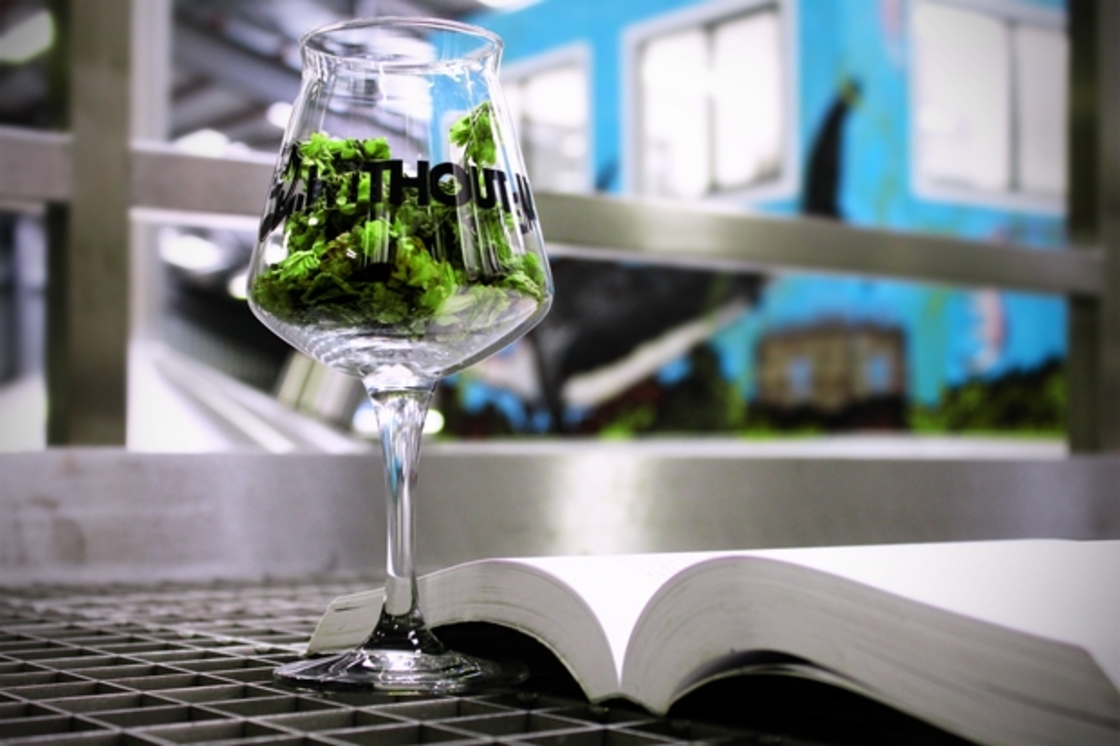The Brewtionary

Here at BrewDog we’re all about furnishing your mind with epic amounts of beery knowledge. For those of you starting out on the craft beer road to enlightenment, being able to ‘speak beer' and know how it's made is a mega first step.
Fear not.
The first instalment of our BrewDog brewtionary is on hand to help you rise through the ranks from noob to knowledgeable and into a fully-fledged craft beer black belt. Here are some of those must know brewing terms and what they mean:
ABV
This little acronym is pretty important and stands for ‘alcohol by volume’. In layman’s terms this means the percentage of the total volume that is alcohol i.e. 5.6% of Punk IPA is alcohol.
When it comes to our own brews, they can vary from the 0.5% Nanny State to the astounding 55% End of History.
If you’re new to craft, don’t be deterred by higher ABVs. Stronger beers are usually consumed in smaller measures – rather than the conventional pint – or shared with friends; much like you’d share a bottle of wine.

Dry-hopping
This is the process of adding hops to the beer after fermentation, during the conditioning phase. Dry-hopping happens at a low temperature so the hops add no additional bitterness to the beer but a tidal wave of aroma and fresh hoppy flavours instead.
We dry-hop the hell out of beers like Punk IPA and Hardcore IPA to unleash a sensory overload of flavour that isn’t achievable with conventional kettle hopping alone. You can fully immerse yourself in the world of dry-hopping here.

Whirlpool
Not the doom of many a naval expedition like in Jules Verne novels, but the fourth vessel in our brewkit. A whirlpool does exactly what it says on the tin and is a vessel in which we spin our wort between the kettle and casting into a fermentation tank. There are two very important reasons for including this in our brewing process.
The first is the option to add our late addition hops into wort that is no longer boiling and away from the direct heat of the kettle. This preserves many of the wonderful flavours and aromas that these hops can provide.
The second is that by swirling the wort in this vessel a mixture of hop particles and any bits of malt collects in the centre and clear wort can be siphoned from the side. This is then removed as it can cause problems during fermentation and make beer look hazy.

IBU
IBU stands for International Bitterness Unit. This is a system used to measure the actual bitterness in beer provided by Alpha Acids in hops. Human taste buds are thought to be able to detect up to 100 IBUs, however the perceived bitterness of a beer is affected by the relative malt sweetness and the drinker themselves.
The most bitter beer we’ve ever brewed is Jackhammer. Made with Centennial and Columbus hops, this 7.2% bad boy of an IPA is brewed to a theoretical IBU of 250 …ready to devastate your taste buds.
Lauter Tun
The lauter tun is the brew kit vessel responsible for separating the sugar laden wort from the residual grain. As we don’t need this spent grain anymore, we donate it to happy cows all around Aberdeenshire to munch on.
Our mash tun took on the extra job of being a lauter tun too in our Fraserburgh base, but our new Ellon digs have plenty of space so we can spread out and specialise our brewing vessels. Long live the lauter tun!

Mash
The ingeniously christened “Mash Kettle” is where the magic, sorry mashing, happens. Over 1000 kilos of malted barley go into each of our brews where it is mugged of all its starchy goodness by a gang of enzymes, aided and abetted by hot water.
The resulting mixture is called the mash and the sweet liquid that we drain from this is called wort. which goes on to feed the yeast and, subsequently, makes the alcohol. Thanks mash, you’re our best buddy!
Mouthfeel
Believe it or not, this brewterm describes how the beer feels in your mouth when you drink it but has nothing to do with how it tastes. Mouthfeel has many aspects including the temperature of the beer, the beer’s body and its carbonation level. The body of a beer is mainly affected the remaining unfermented sugars, which is expressed as the beers Final or Present Gravity (FG or PG). Beers with a higher FG will have a fuller body and feel more viscous in the mouth, like a Russian Imperial Stout, while beers with a low FG will have a thinner character, such as a Gueuze. The level of carbonation can range from the effervescence of a German Weizen to virtually still in a cellared and aged Barley Wine.

Fermentation
All beer undergoes a primary fermentation when that magical ingredient yeast is added to the beautifully crafted, and already incredibly tasty, wort. As the yeast munches away at the sugar it produces the alcohol. Once the yeast has eaten its fill we have the beautiful beverage we all know as beer.
Wort
The wort is the sweet liquid derived from the mash. The starting point for great beer, it contains sugars, flavour and colour derived from malted barley and then is further infused with the bitterness, flavour and aroma of hops in the kettle.
Read more about how we mash and what we get from this process here.
Got a question for our brewers or a term that you want a definition for? Let us know in the comments box below.

Join the Discussion
Comments (14)